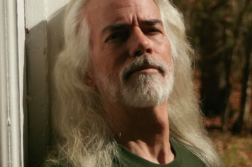Marcy Adelman, Ph.D., founded Rainbow Adult Community Housing back in 1998 as a community group dedicated to serving older GLBT people in the San Francisco Bay Area. Changing its name to “openhouse” in 2004, the project has morphed into a nonprofit organization whose central focus is finding and providing housing for this population. The group’s most ambitious project to date is the imminent construction of an eighty-unit building for GLBT seniors.
A longtime activist for GLBT senior issues, Adelman is the editor of Lesbian Passages: True Stories Told by Women over 40 (1996), and of Midlife Lesbian Relationships: Friends, Lovers, Children, and Parents (2000). This interview was conducted last November via a combination of tape-recorded phone conversations and e-mail exchanges.






